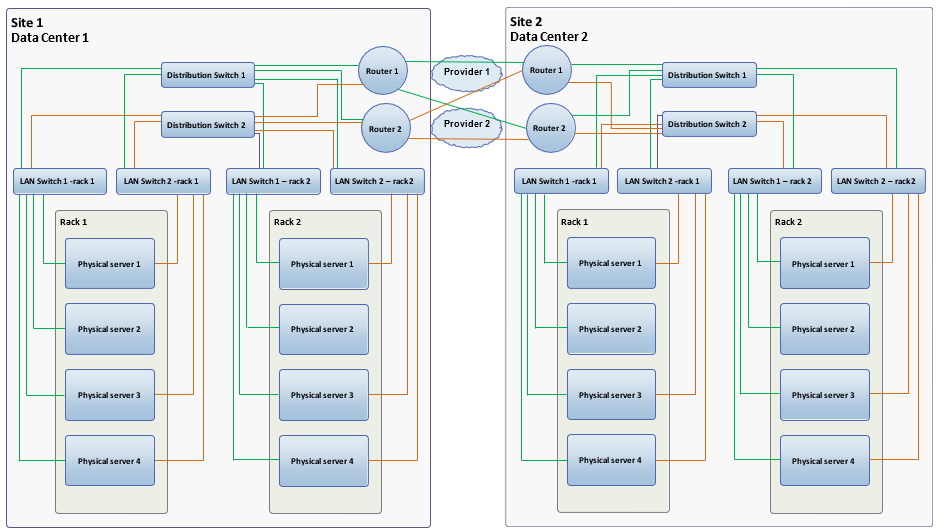Design a High Availability Network
Redundant Network can be designed in several different ways, it will depend on the customer requirements, and normally a good network design includes a combination of hardware and software techniques.
The best way to increase the availability in any network is to ensure that network elements are always fitted with redundant components to avoid single point of failure.
Some examples of components to consider are:
- Power supplies
- Links
- Switches
- Routers
- Physical location of equipment
- Disks
- Storages
Network single point of failure reduction can be achieved using duplication of some hardware and the introduction of some network protocols that can help the availability of the network.
Techniques likes as Virtual Local Area Networks (VLAN), Virtual Redundant Route Protocol (VRRP) and Layer 3 Protocols can be used to create a redundant environment that can increase the network availability. When using VRRP different VRID shall be used to avoid that the same MAC address is used by two VLANs.
Avoid the common mistake of using different VLANs in the same physical switch for network redundancy. If the switch fails, both VLANs will fail.
Avoid overbuilt (excessive network redundancy) because it is more difficult to manage.
Avoid under built (for example, having redundancy links between sites, but the links are fully loaded), because when needed, there will not be sufficient bandwidth to handle the extra traffic that will come from the link that presents the failure.
The figure below shows a high-level network redundant example.
